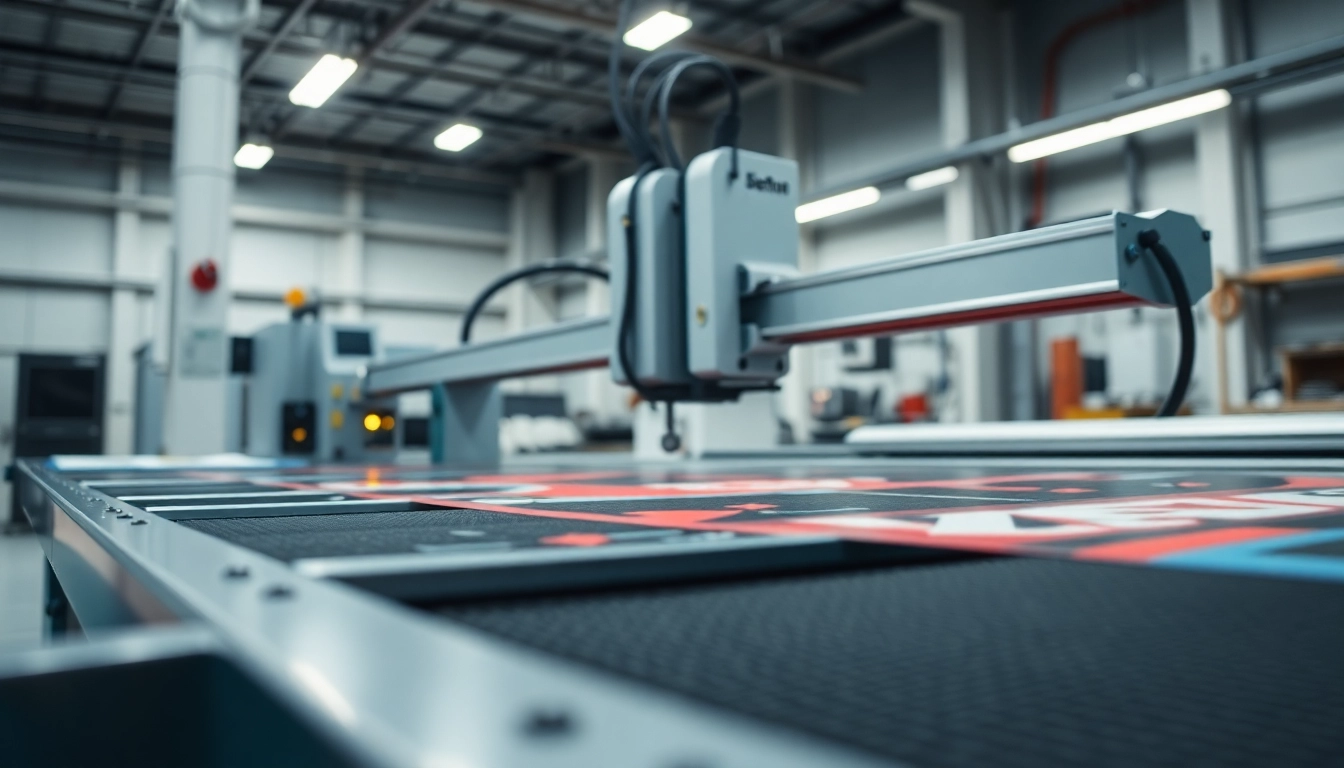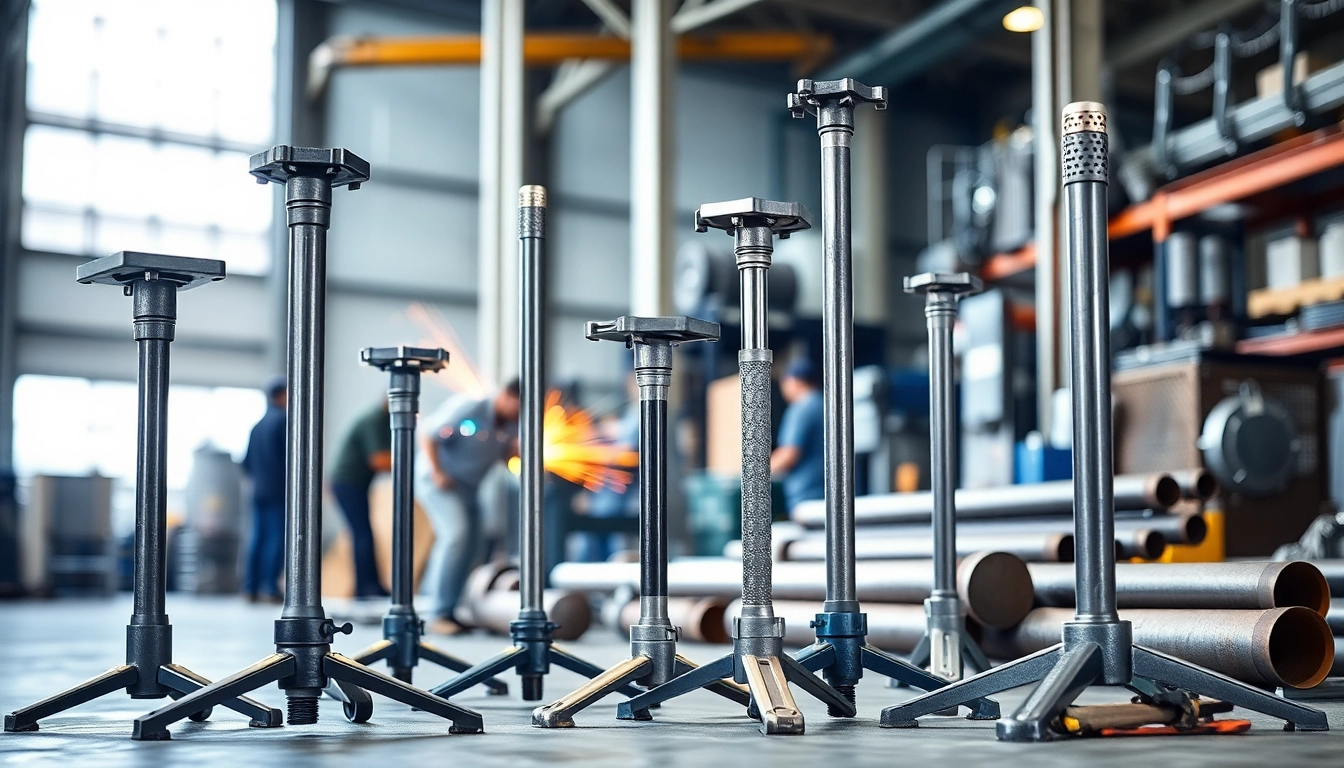Understanding Precision Die Cutting
In the modern manufacturing sector, precision die cutting is a pivotal process that enables the production of intricate parts and shapes with exceptional accuracy. This technique involves utilizing dies to cut materials into specific shapes, sizes, and specifications, delivering high-quality outputs essential for various applications. As industries continue to evolve, understanding this technology and its applications becomes increasingly crucial for professionals looking to stay ahead of the curve.
What is Precision Die Cutting?
Precision die cutting refers to the process of using a die to cut accurate shapes from various materials, which may include paper, cardboard, plastics, or even metals. This technique is widely appreciated for its ability to deliver exact dimensions and shapes while maintaining tight tolerances. The die itself is typically made from steel or a material that can withstand the pressure applied during the cutting process, allowing for high-volume production without sacrificing quality.
Historic Overview of Die Cutting Processes
The origins of die cutting can be traced back to the early 19th century when it was primarily used for leather and fabric cutting. The introduction of steam-powered presses in the late 1800s revolutionized the industry, allowing for faster production rates and the ability to leverage more complex shapes. Over the decades, advancements in technology—particularly with the advent of computer-aided design (CAD) and automated machinery—have enhanced the precision and capabilities of die cutting, making it a staple in manufacturing today.
Applications Across Various Industries
Precision die cutting finds applications across a diverse range of industries, including packaging, automotive, electronics, healthcare, and textiles. In packaging, for instance, it is used to create cartons, clamshells, and labels with specific dimensions. The automotive sector utilizes this technology for cutting insulation, gaskets, and other components that require specific tolerances. Moreover, in the healthcare industry, precision die-cut parts are crucial for packaging medical devices and creating protective gear.
Types of Precision Die Cutting Techniques
Rotary Die Cutting Explained
Rotary die cutting involves using a cylindrical die to cut materials as they are fed through the machine. This method is particularly effective for high-volume production runs, as it allows for continuous operation and high-speed processing. The rotary die can be designed to include multiple cutting stations, enabling the production of several shapes simultaneously. This technique is commonly used for packaging materials, stickers, and labels, offering high accuracy and repeatability.
Flatbed Die Cutting: Features and Benefits
In contrast to rotary die cutting, flatbed die cutting utilizes a hydraulic or mechanical press to cut materials. The die is placed on a flat bed, and the material is fed beneath it. This method is ideal for thicker materials and provides excellent precision, particularly for complex shapes. Flatbed die cutting is frequently used in custom applications, including creating prototypes or short-run projects where precision is paramount.
Laser Die Cutting: A Modern Approach
Laser die cutting represents a significant advancement in the die cutting process, utilizing a laser beam to cut through materials. This method allows for exceptional precision and intricate designs, making it ideal for projects requiring highly detailed cuts. The versatility of laser cutting extends to various materials, including metals, plastics, and fabrics. Additionally, laser die cutting reduces waste material, as the laser can be expertly controlled to create sharp, clean edges without the need for physical contact, thus minimizing damage to the substrate.
Challenges in Precision Die Cutting
Cost Considerations in Die Cutting Projects
While precision die cutting offers numerous advantages, cost remains a significant factor. The initial investment for dies can be substantial, particularly for custom shapes that require specialized tooling. Businesses must weigh these setup costs against the potential for economies of scale once high-volume production begins. Additionally, material costs and labor expenses should be carefully considered to ensure project profitability.
Common Issues and Their Solutions
One common challenge in precision die cutting is ensuring that cuts are made within tolerance limits. Minor discrepancies can lead to significant issues in assembly or product performance. To address this, manufacturers should implement rigorous quality control measures at each phase of the process. Utilizing digital measurement tools and conducting regular maintenance on cutting machinery can help ensure that the die cutting process remains accurate and reliable.
Maintaining Consistency and Quality
Maintaining consistency across batches is critical in precision die cutting. Variability in materials, machine calibration, and operator proficiency can introduce inconsistencies. Establishing strict protocols for material selection and machine settings, along with regular operator training, can significantly contribute to maintaining high product quality across production runs. Employing automation where possible also enhances consistency by eliminating human error.
Choosing the Right Die Cutting Vendor
Criteria for Selecting a Precision Die Cutting Partner
Selecting the right precision die cutting vendor is crucial for ensuring project success. Key criteria to consider include the vendor’s experience in your specific industry, their range of offered services (such as prototyping, production runs, and material capabilities), and their reputation for quality and reliability. Additionally, evaluating customer service responsiveness and support can significantly impact your partnership’s effectiveness.
Questions to Ask Before Committing
Before engaging with a precision die cutting vendor, it’s essential to ask the right questions to comprehensively understand their capabilities. Inquire about the types of materials they work with, the technologies they employ, and their lead times for production. Additionally, asking for references or case studies can provide insights into their work quality and reliability in past projects.
Evaluating Vendor Capabilities and Services
Evaluation of a potential vendor’s capabilities should involve an in-depth review of their technological resources and quality control processes. It’s vital to assess whether they utilize modern cutting technologies and have robust quality assurance practices in place. Furthermore, inspecting their production environment for cleanliness and organization can indicate their commitment to maintaining high standards.
The Future of Precision Die Cutting
Innovations and Trends in the Industry
The future of precision die cutting is a beacon of innovation, marked by advancements in automation, material science, and sustainability. Emerging technologies, such as artificial intelligence (AI) and machine learning, are enhancing cutting accuracy and efficiency by analyzing cutting patterns and optimizing production processes. The rise of demand for customization in manufacturing is also steering the industry towards more flexible solutions that traditional methods may not provide.
Sustainability Practices in Die Cutting
With increasing awareness about environmental impact, sustainability in precision die cutting is becoming paramount. Manufacturers are adopting eco-friendly materials and optimizing processes to reduce waste. Implementing recycling programs for off-cuts and selecting biodegradable or recyclable substrates not only helps the environment but can also resonate positively with consumers increasingly concerned about sustainability.
How Technology is Shaping Precision Die Cutting
Technological advancements are continuously reshaping the landscape of precision die cutting. The integration of automation and robotics is streamlining workflows, reducing lead times, and enhancing accuracy. Technologies such as augmented reality (AR) and virtual reality (VR) are also being explored for design and prototype validation, offering manufacturers the ability to visualize intricate designs before production begins. As technology continues to evolve, it promises to make precision die cutting more efficient, adaptable, and eco-conscious, paving the way for unparalleled manufacturing capabilities in the future.


